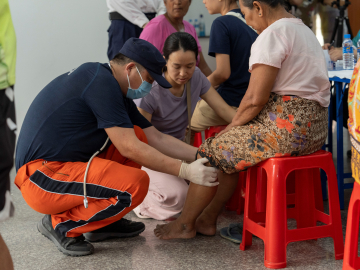First Step for Vaccine Success: Cultivate Demand
Science took a giant leap forward when effective COVID-19 vaccines were developed and brought to market in less than a year.
Virtually every major drugmaker now has an mRNA vaccine in the works, aimed at conditions from the seasonal flu to HIV, Alzheimer’s, tuberculosis, autoimmune disorders, to cancer.
But what if we build them and the people don’t come?
The problem, glaringly apparent as the coronavirus pandemic rages into its third year, is that we’re not ready to properly roll out any of them.
That’s because governments and global organizations largely miss an essential step in vaccine launch: creating demand—explaining to their populations the need for a vaccine and the relevance of the vaccine to them, their families, and their communities.
As many countries are well aware amid the current pandemic, good communication is not a given. Further, in this vacuum where proactive messaging about the vaccine is not common, antivaccination stories can flourish. Even when negative messaging does not take hold, the vaccines can begin to be perceived as controversial.
When I led the global launch of the Gardasil HPV vaccine years ago, the kiss of death for its uptake was for people to first hear that it was a “controversial vaccine.” We should not lead with a potential problem or try to debunk misinformation when initially rolling out a vaccine; we should transparently present balanced information of benefits and risks. We should not assume hesitancy until and unless we have adequately communicated in the first place.
COVID-19 is an example of a new vaccine deployed without proper preparation. Per a World Bank report, countries faced a barrage of issues with the rollout, including generating demand. While the vast majority had national rollout plans, for example, only 27% of countries had created social mobilization and public engagement strategies to encourage vaccinations.
When we introduce a vaccine into a country, people have a right to know about its safety and effectiveness. They also need that information to relate to their specific situation and context – and they need this communication to come from someone they trust. That requires an efficient information delivery and social mobilization network at all levels—from the national level down to local communities—well in advance of any vaccine’s introduction.
When communication is not effective and timely, the result is challenging. To avoid a such predicament, here’s a checklist for effective communication:
- Train health workers at all levels—from community health workers, to nurses, pharmacists, and dentists—to deliver consistent messages about vaccine safety and benefits.
- Put scientists at the forefront of messaging—training them in effective communication and giving them more prominent communication roles, including as primary public spokespersons, to help instill trust in vaccines.
- Work with local civil society organizations, businesses and religious leaders, too—a strategy that proved effective in debunking myths and encouraging people to seek treatment during the 2014 Ebola outbreak.
- Work with national immunization technical advisory groups (NITAGs) and other medical policy organizations to help local policy makers understand a vaccine’s relevance and importance to their population. Countries without a NITAG can benefit from the Global NITAG Network, which fosters cross-regional collaborations, experience and knowledge exchange.
Don’t assume local trusted leaders are adversaries. At the launch of Gardasil, many of us were concerned about how religious organizations would respond. Worries varied, but they amounted to the connection between transmission of human papillomavirus and sexual activity.
So before the vaccine’s US launch, we engaged medical directors to contact religious groups with medical staff or missions and sat down with them, physician to physician, to explain the science and role a vaccine can have in preventing cancer.
These amazing institutions had created medical missions because they felt called to prevent disease. Once they appreciated the vaccine’s goal was to prevent these same diseases, many worked very hard to advance vaccination.
The need to bolster health systems, the backbone of vaccine rollouts, should not be neglected. Rural areas, a lack of infrastructure, and the need for cold-chain transport present important challenges and expenses in lower-resource countries. As Wade Warren of Deloitte and I wrote in Next Billion, devices like remote sensors and mobile technology already exist that can help medical supply chains make a quantum leap into efficiency.
In short, more intentional training and communication by and with health systems on the ground can help ensure demand for the next generation of vaccines—with benefits that can far outlast the pandemic.
Marian W. Wentworth is president and CEO of Management Sciences for Health, a nonprofit global health organization.
Join the 50,000+ subscribers in 170+ countries who rely on Global Health NOW for the latest public health news. Sign up for our free weekday newsletter, and please share the link with friends and colleagues.
A man peeks inside a vaccine storage cooler in Madagascar. Image: Samy Rakotoniaina, Courtesy of Management Sciences for Health




